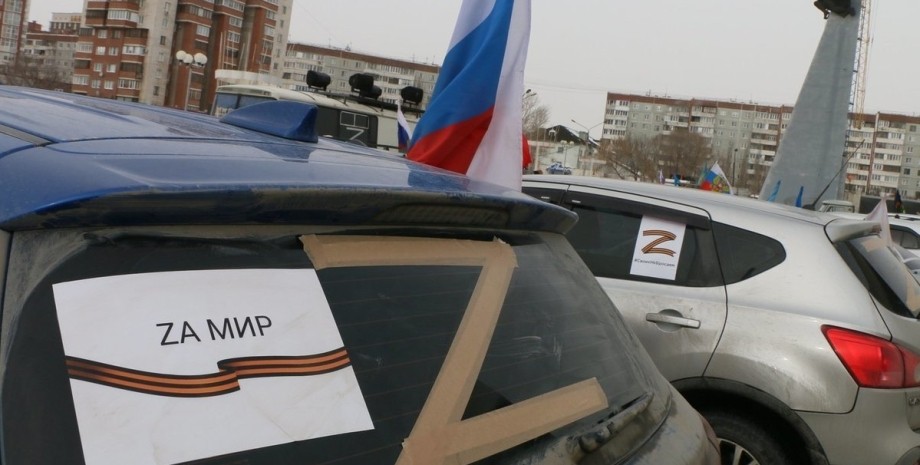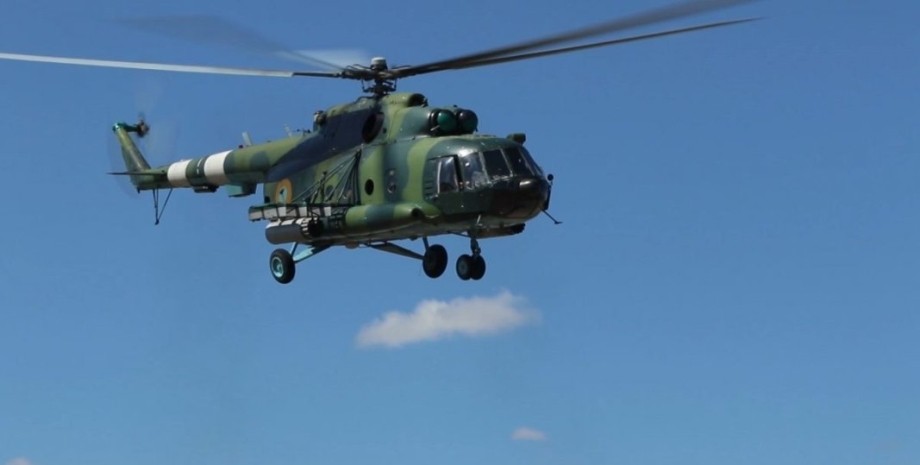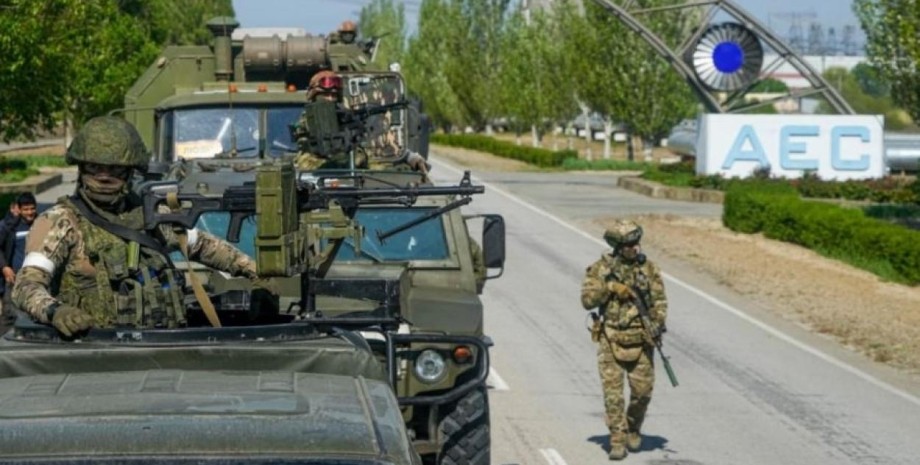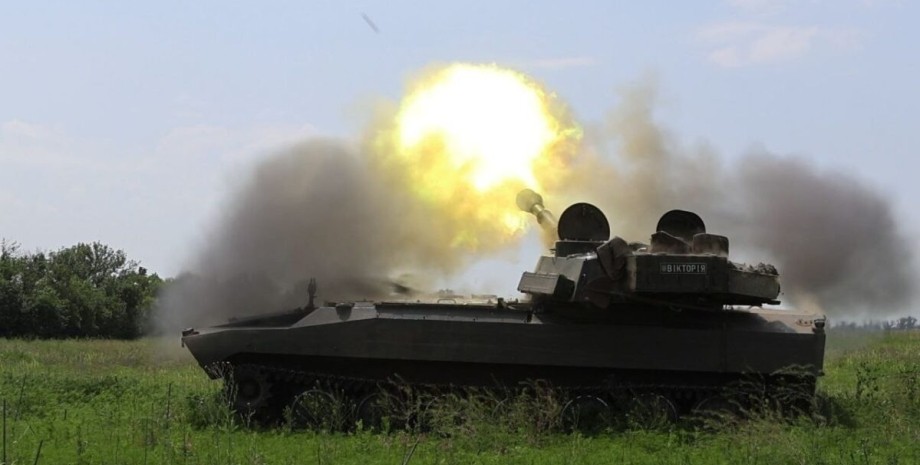I will try to focus on criticism, not on condemnation. Video of the Day of Ukraine's Land Forces may seem strange, but logistics and supply are not a major problem in the Armed Forces. At least it is no longer-and despite the fact that at the beginning of the war the Russians either demolished, or at least severely damaged all large oil refineries and warehouses of fuel and lubricants (PMM) in the country. It's an example.
Thanks to the Ukrainian railway (Ukrainian or UZ) ammunition, weapons, fuel and NATO reserves, transported and distributed as quickly and efficiently as possible, and all over the path from the western and southwestern borders to the battles in the east and south. What manages and staff are surprised - especially that during the first four months they have experienced regular strikes of Russian ballistic and winged missiles.
So regular that more than 70 employees of the UZ were killed by the end of April, and to date, more than 170. No matter where they kissed and what damage the Russians caused, as far as I know, serious delays - more than 24 hours - never never It was. If you ask me, then I will say that this is a serious achievement, and the whole country should say Ukrzaliznytsia a lot.
Once the western deliveries found themselves in the country, Ukrainians also showed great ingenuity in their concealment, which was absolutely necessary before the Armed Forces of the Russian Federation had devastated their reserves of ballistic and winged missiles. In particular, units that have received new weapons can not always accept it immediately and quickly transfer it to the place of operation: quite often, the weapon comes to the destination within a few days.
In other cases, supply is distributed by units that must learn to use this weapon. In the meantime, it is necessary to store not only weapons, but also related ammunition and spare parts somewhere. This is especially true of artillery ammunition: they need to be supplied in such a quantity that they cannot be spent in a day or two.
And this, in turn, means that it should not only be delivered to Ukraine, but also close to the battlefield, and then stored next to the latter, but at the same time imperceptibly from the Russians. A difficult task, but apparently the Armed Forces solves it quite well due to decentralization: it has many "small" ammunition compositions on the front line, and the Russians have huge problems even with attempts to find them.
Keystone Cops in Moscow (so the author calls the Ministry of Defense of the Russian Federation-HB), trying to interfere with this distribution on large warehouses, factories, etc. , deeper in Ukraine)-and this is with their high-precision air base ammunition (PGM, primarily X-59/AC-17, but X-25/AS-10 and X-29/AS -14 were unfolded in a large number). From what I can say, this attempt was exceptionally unsuccessful. Because the Ukrainian air defense remained effective.
And the mass of Russian PGM relative to the near radius of action required every shock aircraft involved, at least another accompaniment aircraft for radio electronic wrestling. If you judge the miserable results, it costs expensive PCS of the Russian Federation - both about fuel, in part of spare parts, and maintenance.
However, the biggest problem for the Russians remains the question of finding Ukrainian warehouses of weapons: in the Armed Forces of the Russian Federation, logistics is centralized, and everything is stored in large warehouses, which are easy to find (which is why many of them have been affected by Ukrainian M142 Himars and other means in the last two months).
There were similar storage facilities in Ukraine, but most of them were either destroyed at the beginning of the war (one even captured the Russians), or is empty. Currently, Ukrainian logistics works with the help of many small warehouses. Perhaps the game and the FSB are a little easier "further in the West": they still support an effective network of informants - inside Ukraine, but also in most of the Eastern Flang of NATO.
They track well and report the movement of the weapons that NATO supplies it - and this begins in various airports and ports of Poland and Romania. The problem is what is going on: in about 99% of cases, Russians lose their traces of deliveries shortly after they enter Ukraine and they are unable to find them again (at least before new weapons are launched) . Thus, internal security in Ukraine is functioning quite well.
In part, this is due to the fact that Ukraine has proven effective in counteracting Russian cyberwarrows: do not forget that this war on the Internet is as stubborn as "bullets" on the front line. The Russians may have been very successful at an early stage, but in the meantime, Ukrainians and their allies (among the latter, a number of "unofficial" nodes that sympathize with the Ukrainian business) clearly exceed them.
Where Ukrainian logistics is not so good, it is where it concerns other types of technology. For example, all the infantry has too few night vision devices, armor and ballistic helmets, and even in some units of the special forces, there are still not enough ambulances. So, if someone wants to help: I recommend making a donation to those instances that are responsible for supplying the army of such equipment.
The word "shelling" leads me to the next point: if the essence of the Armed Forces of the Russian Federation could be summarized as "mechanized forces focused on artillery", then the Armed Forces of our day could be summarized as "infantry forces focused on artillery . . . if the latter is accessible.
" The main difference between the Armed Forces of the Armed Forces is situational awareness: Russians use their UTC only to coordinate artillery units; Ukrainians use the nettle application to coordinate artillery, as well as infantry, armored vehicles and other units.
It's a little hyperbole, but I am not surprised if the networks of the Armed Forces of the Armed Forces are about the same situational awareness as the Generals of the OSC South Staff in Rostov-on-Don (and, of course, greater than any Russian officers below the level this headquarters). However, it is a stick at two ends: the Armed Forces decentralized command means that "every little Napoleon" on the battlefield can initiate an artillery blow.
Instead, this means that the actions of Ukrainian artillery often lack coordination: because the advantage of Russians in artillery leads to frequent artillery duels, Ukrainian artillery units usually operate in large areas. Often, very small detachments (one, two, three guns as a maximum), and if then "every sergeant" causes artillery support, then these detachments are dispersed even more, often outside the control of the command commanders, and each shoots something else.
The lack of coordination is a lack of coordination: it rarely happens that several artillery units are targeted at the same concentration of Russian artillery. First of all, the Armed Forces, as before, is very little artillery: at best they have about 500-550 guns and about 200 rockets of volley fire (against about 2500 artillery installations and more than 1000 reactive systems of the Russian Armed Forces of the Russian Federation).
And not only because of the lack of shells for the old towing guns of the Soviet caliber development 122 and 152 mm, but also through losses. As far as I know, the Armed Forces have lost more than 100 artillery guns today (including about a dozen M777, for example). The good news is that Ukrainians are particularly efficiently knocking out their most dangerous opponents, such as MSTA-C, 2C5 "Hiacint-C" and 2C7 "Pion": according to my estimates, more than 150 units have been harvested.
However, the Russians can only have problems with the production of new MSTA-C. One way or another, there is so little artillery in the Armed Forces that in fact it can effectively resist the artillery of the Armed Forces of the Russian Federation in only two sections of the front: Kherson and Southern Zaporozhye. As noted above, there are large sections of the front line, from where all Ukrainian artillery was derived from the need for it in other places.
This is a big problem, because sooner or later the Russians will find out about it, and then Ukrainians suffer terrible losses. For example, on August 1 and 2, the Russians released a battalion of the 56th Sand Rifle Regiment, 6000-7000 shells, literally turning this capable experienced part into dust. When the (infantry) reserve was sent forward to hold the line, they say that only one soldier returned alive.
Not surprisingly, one of the Russian PECs (everyone just says that Wagner PVC, although several), was able to take most of the place. Fortunately for Ukraine, the Russians lacked both infantry and mechanized forces necessary for the use of this opportunity: their PVC and the 11th Regiment (Donetsk) suffered great losses only when trying to storm Vodyany and Novosilsky, and then during the counterattack of Ukrainians.
That is why the Armed Forces of the Russian Federation has not managed to break through, and the fights in the sands continue. (By the way, the 110th brigade of TD, which kept part of Avdiivka, barely escaped such a fate, primarily because it contained in the rear the 25th Division of the Airborne Airborne. The latter was thus able not only to resist Russian artillery, but also to impress The 100th Regiment of Separatists, when he tried to attack Krasnogorivka, a few days.
Even then, I had the impression that what really saved the northern flank of the Avdeev position on August 6, was that the Armed Forces were forced to bring at least one at that time From its artillery brigades from Donetsk region, and to throw it south of Zaporozhye - because of the big crisis in that area - and, by irony of fate, it was "caused" by highly efficient Ukrainian artillery).
That is why NATO NATO Supplies such as M142 Himars and M270 MLRS: their firing power and accuracy allow Ukrainians to impress enough advanced Russian ammunition formulations, which has made it possible to dramatically reduce the intensity of the Armed Forces of the Armed Forces for the last month.
Moreover, the Russians not only suffered great losses in their small personnel, which has the experience of maintaining the rear support, but were also forced to direct additional efforts to create new ammunition depots, all so far from the front line - beyond the reach of HIMARS and RSZV . That they now need much more time, much more trucks and drivers to replenish their troops.
There is a problem: even if the number of M140 and M270, meanwhile, has increased to some 24-25, however, there are not so that Ukraine cannot make more than effectively block Russian logistics in a particular area for two to three days, occasionally longer. That is why the Russians were still able to carry out such massive shelling of sands, and then Avdiivka in less than two weeks after Ukrainian Himars undermined most of their ammunition depots in the Donetsk area.
The Ukrainians lacked artillery to reflect them, and at the same time to keep the local network of railways under constant pressure - and this is not to mention that even such Ukrainian achievements were given the cost of keeping the troops of the farthest area Insufficiently supported by artillery. The next problem with the Armed Forces is a shortage of experienced and qualified junior officers and non-commissioners. I would have added a lack of qualified officers at an operational level.
Note: a mobilized mass of Ukrainian reserves, which led to a massive increase in the number of troops, the creation of new parts and the expansion of existing ones. Meanwhile, numerous units have suffered - most often - serious losses.
All this requires many officers and non-commissioners, almost as many advisers and instructors, and then it takes time to not only give the troops basic training, but also to form from them capable platoons, mouths, battalions, regiments and crews with the necessary equipment. Not surprisingly, not only thousands of additional recruited Ukrainian servicemen, sergeants and officers are now being trained - some in NATO countries, but most of them in Ukraine, but also whole brigades.
Ukrainians also have to overlook most of their forces: this is especially important, because Ukrainian experience showed that up to 95% of the losses are suffered by inexperienced troops: in fact, troops that have never participated in hostilities before, and during their first battle. Anyone who has at least one combat experience already has ten more likely to survive.
Since the General Staff is still not enough troops and equipment to properly occupy the entire front line and, as before, to conduct useful operational research, he has two options: 1. Urgently throw inexperienced troops so that they act as "fire teams" and The gaps were closed every time it is urgent and suffered serious losses, which would then cause differences and demoralization between the troops, or 2.
Continue to weaken the capable parts, relocation of their elements to where there is an extreme need. Obviously, none of them are perfect, and the results are very bad, no matter what.
We have seen what happens when the Armed Forces removes a lot of experienced troops even from a narrow section of the front line-for example, in the case of Novolugansk and Svetlodar (they took away two battalions of the 30th mechanized regiment for their relocation) to the north; The Russians learned about it and almost without a battle they took Svetlodarsk. A month later, this eventually led to the loss of the TPP and thus the invasion of the Russians in Bakhmut.
We saw how Ukrainian counter-offenses were squeezed because they were attacked by poorly trained parts, such as the 60th infantry and 61st heger, before they were ready. We saw the Russians smashed an inexperienced and lightly armed PT battalion in Toshkivka, only to make another escape.
The Ukrainians had to throw a battalion of one of the airborne brigades all over Nikolaev to close the break, and even after he arrived, everything he could do is keep the corridor south of Lisichansk open for a long time so all troops , located further north, could retreat.
It also works in the opposite direction: we saw what happened to the battalion of the newly formed 25th Airborne Division, when the Russians advanced south of the Dibrovna, almost driven into the rear of the defenders of the Virgin and Slavyansk. The counterattack required a re-deployment of the battalion of the 93rd Mechanized Brigade.
It was very effective: the whole Russian BTG was destroyed (ie about 10-15 VTTs and about 40 APC/BMP in exchange for one BMP!) In addition, this counterattack had to be stopped until the long, because there were no troops to consolidate. Result: The 93rd was forced to abolish the promising counterattack and reduce the front line.
This is a problem - a lack of capable officers and other ranks (plus the problem with the fact that many officers of the Old Guard remain in service - people whose command is given not only age, but also poor preparation of past times, but it is necessary "but it is necessary" To strengthen the numbers ”), which I do not see the decision in the near future.
Ideally, NATO should put so much advanced weapons so that the Armed Forces could at least restrain the Armed Forces of the Russian Federation with less well -equipped units. But this does not happen. Instead, NATO's weapons arrive, but in too small quantities. This leads to constant combat exhaustion. This is what will remain a problem for a few months in advance (at least).




















Všetky práva vyhradené IN-Ukraine.info - 2022